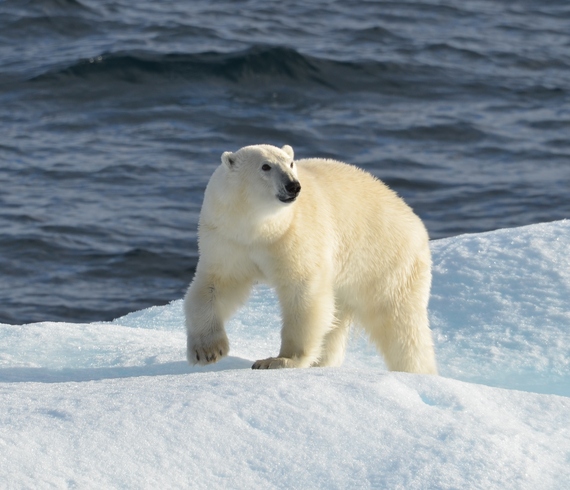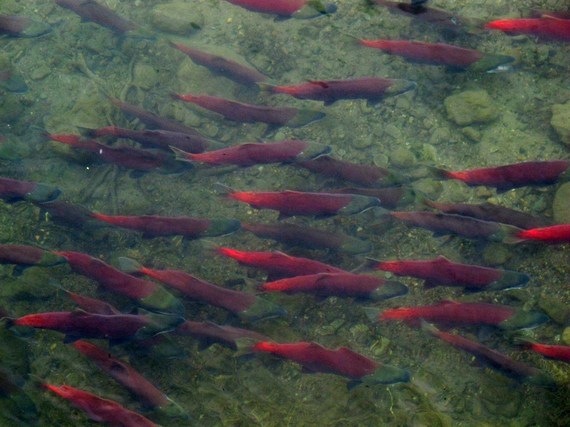The world is always changing, bringing bold breakthroughs in technology and conservation, as well as formidable challenges. In 1970, 20 million Americans celebrated the first Earth Day, formally launching a coordinated effort to address the rampant ecological degradation of the era. In short order, Congress passed a raft of powerful environmental laws that govern how we manage ecosystems and the species in them: the National Environmental Policy Act (NEPA, 1970), the Clean Air Act (1970), the Clean Water Act (1972), the Endangered Species Act (ESA, 1973), and the National Forest Management Act (NFMA, 1976), among others. However, over 45 years later, global change is shifting scientific baselines for endangered species recovery, engendering years of litigation and conflict among stakeholders.
Back in the 1970s, we thought saving nature would be as simple as deciding to do so -- like building an ark. And in some cases, as it was. We banned DDT, and many bird species that had been experiencing the lethal eggshell-thinning effects of this toxin rapidly recovered. But in other cases, as with the wolf, grizzly bear, lynx, polar bear, northern spotted owl, and salmon, federal protection under the ESA and other laws hasn't created a simple path to recovery. Emerging trends have greatly complicated conservation, shifting baselines for conservation of species and whole ecosystems.
These shifts include:
Climate change - The climate has warmed 1.3 to 1.9 degrees Fahrenheit (0.8 to 1.1° Celsius) since 1885, mostly since 1970. This has made extinction risk on Earth 1000 times higher than normal overall.
Explosive human population growth - The current global human population is at 7.5 billion people, roughly double what it was in 1970, greatly increasing human impacts on flora and fauna.
Economic challenges - The US national debt is 50 times greater than in 1970 (without accounting for inflation), thereby significantly reducing funds for research and conservation.
A more conservative political climate - The US political climate is less progressive than in the 1970s and 1980s. Today, many of our environmental laws face major ongoing congressional challenges.
New science about ecosystem complexity and population viability - In the past 20 years, we've found that predators such as wolves can create ecosystems far more resilient to climate change than those that don't contain these keystone species. However, these far-from-simple effects are contingent on many other factors, such as climate and fire. Advances in DNA technology are enabling a more empirical definition of what constitutes ecological recovery for threatened and endangered species. In some cases this number is significantly higher than what we imagined in the 1970s.
How are these shifting baselines affecting how we apply laws such as the ESA? For species negatively impacted by climate change, this means redefining what recovery means -- where and over how long and how many individuals. For example, protecting polar bears from hunting in the Arctic may be insufficient to save a species whose essential habitat for survival (sea ice) is diminishing rapidly. It also means readjusting our notions of how long and how much money endangered species recovery will take. For a species such as the northern spotted owl, which needs mature forest to thrive, and which is being threatened by expansion into its range of the more aggressive barred owl, scientists are beginning to wonder whether recovery is attainable. Then there are the many millions of dollars it actually costs to apply laws such as the ESA, NEPA, and NFMA to attempt to recover salmon in the Pacific Northwest. When you factor in climate change, the complex ESA effort to recover the six salmon species listed since the 1990s can resemble a Sisyphean battle.
What's the solution? Some recommend not changing anything and soldiering on to apply laws that no longer quite fit our radically changed world or reflect the current state of scientific knowledge. Others suggest abandoning species recovery or weakening environmental laws. None of these are viable options.
Scientists such as Susan Clark have found that best science that accounts for the needs of threatened and endangered species and the human communities affected by their presence, applied within an adaptive management framework, can go far toward recovery. Adjusting laws to address threats such as climate change that weren't on anyone's radar screen in 1970 will make these statutes as effective as possible. Clearer definitions of fuzzy terms such as what constitutes a "significant portion" of a species' range (per the ESA) also would be helpful.
Given that scientists estimate that, due to climate change and other factors, 35 percent of the species currently on Earth are expected to become extinct by the year 2050, and 50 percent by the year 2200, we need to do something. As Einstein put it, "We can't solve problems by using the same kind of thinking that created them." We would do well to heed his wise words as we sail our raft of environmental laws into the brave new world we've created.
* * *
Learn more about carnivore conservation by reading The Carnivore Way: Coexisting with and Conserving North America's Predators, and The Wolf's Tooth: Keystone Predators, Trophic Cascades, and Biodiversity by Dr. Cristina Eisenberg. Learn more about large carnivore ecology by joining Cristina afield on her Earthwatch research expedition, Tracking Fire and Wolves through the Canadian Rockies.




